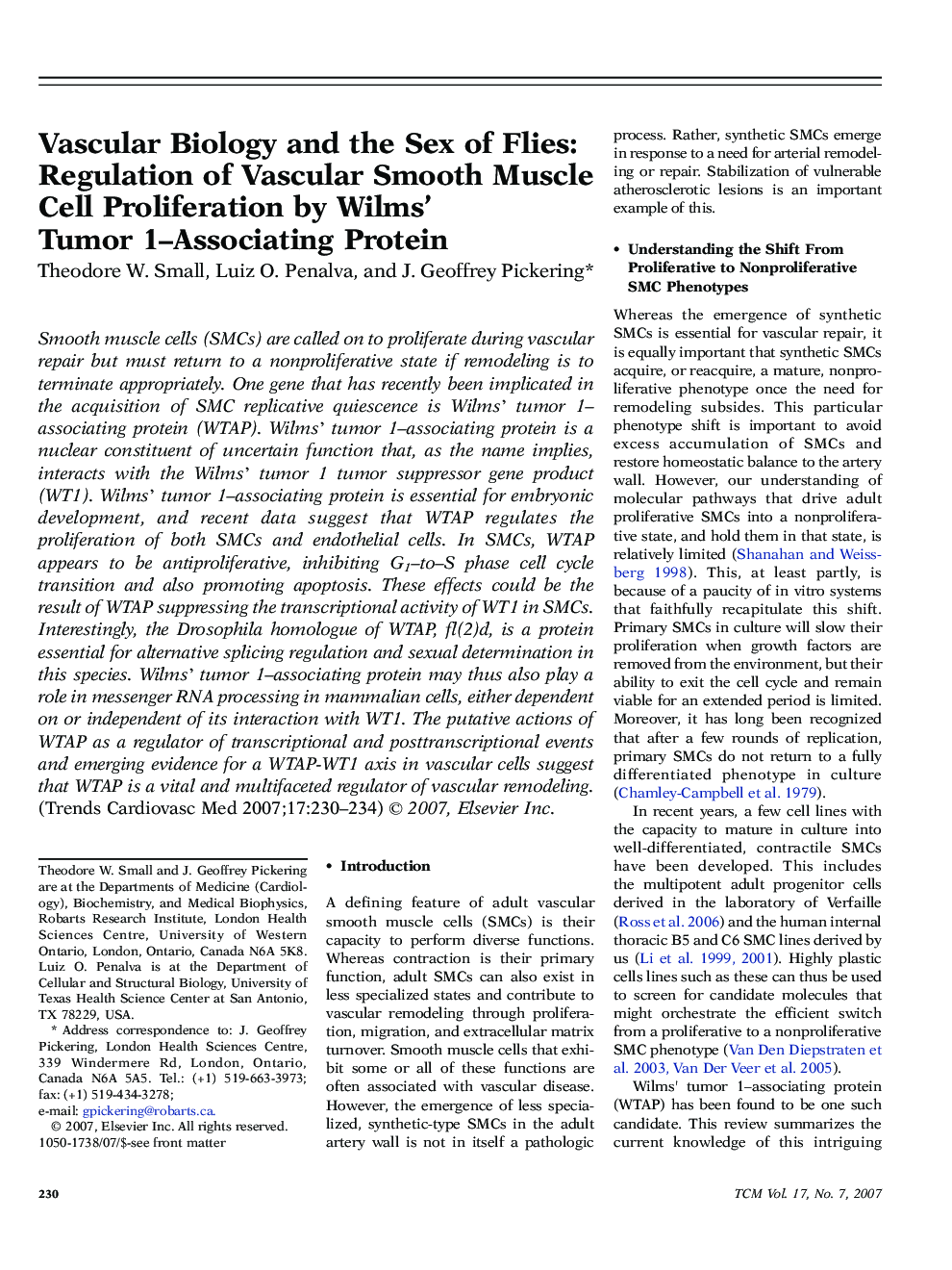| Article ID | Journal | Published Year | Pages | File Type |
|---|---|---|---|---|
| 3030700 | Trends in Cardiovascular Medicine | 2007 | 5 Pages |
Smooth muscle cells (SMCs) are called on to proliferate during vascular repair but must return to a nonproliferative state if remodeling is to terminate appropriately. One gene that has recently been implicated in the acquisition of SMC replicative quiescence is Wilms' tumor 1–associating protein (WTAP). Wilms' tumor 1–associating protein is a nuclear constituent of uncertain function that, as the name implies, interacts with the Wilms' tumor 1 tumor suppressor gene product (WT1). Wilms' tumor 1–associating protein is essential for embryonic development, and recent data suggest that WTAP regulates the proliferation of both SMCs and endothelial cells. In SMCs, WTAP appears to be antiproliferative, inhibiting G1–to–S phase cell cycle transition and also promoting apoptosis. These effects could be the result of WTAP suppressing the transcriptional activity of WT1 in SMCs. Interestingly, the Drosophila homologue of WTAP, fl(2)d, is a protein essential for alternative splicing regulation and sexual determination in this species. Wilms' tumor 1–associating protein may thus also play a role in messenger RNA processing in mammalian cells, either dependent on or independent of its interaction with WT1. The putative actions of WTAP as a regulator of transcriptional and posttranscriptional events and emerging evidence for a WTAP-WT1 axis in vascular cells suggest that WTAP is a vital and multifaceted regulator of vascular remodeling.
